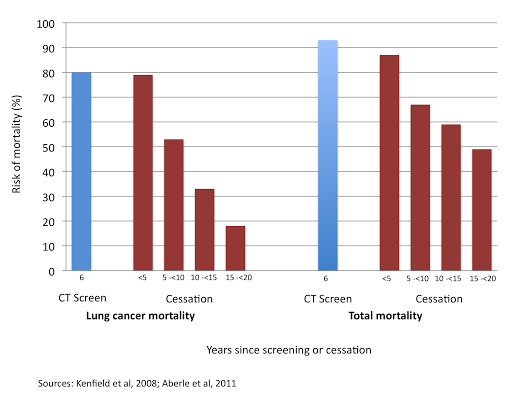In 2008, scandal struck the world of cancer screening. A rare occurrence, to be sure. About two years after the release of a groundbreaking study showing that low-dose CT scans could catch lung cancer early and save lives in smokers, it was revealed that the study’s principal investigator had close ties to the tobacco industry.
That revelation threw into deep suspicion the study results. It seemed to many that findings showing that lung cancer could be successfully caught in early stages and treated would greatly benefit the tobacco industry because many smokers would not feel a pressing need to quit. “Why can’t I just keep smoking and rely on screening to catch any issues and fix them,” the logic might go.
As we’ve written about previously, the study results were eventually replicated by other researchers and the principal investigator largely exonerated. And low-dose CT is quickly becoming a standard screening test for many with a history of heavy smoking.
But one key concern voiced during that tumultuous period may now be coming true. As highlighted in a New York Times story this week, a small study of smokers found that lung cancer screening may actually be providing many of them a disincentive to quit smoking.
If such attitudes translate nationwide, even partially, it could be a major public health concern. While effective lung screening can lower the number of deaths from lung cancer, that is all it does. But smoking causes many different cancers and raises the risk of heart disease, stroke, and diabetes. Stopping smoking lowers the risk of all of these, and the benefits only increase over time.
The figure below shows that screening lowers the risk of dying of lung cancer by around 20 percent after six years. Stopping smoking does the same after about five years. As the years off cigarettes stack up, though, deaths from lung cancer drop dramatically, by over 80 percent after 15 – 20 years of cessation. Even more notable, perhaps, deaths from all causes also drops shortly after stopping smoking, with the benefits increasing year after year of cessation.
It is a clear picture of the benefits of smoking cessation.
While there is no doubt that CT screening for lung cancer is an important tool, it should not be used in place of effective efforts at cessation. They should go hand-in-hand. The power of cessation to lower the risk of cancer, heart disease, stroke, and other chronic diseases is unmatched. Stopping smoking is the single best thing any one person can do for his or her health.
Smokers need to know that and to be encouraged and supported to quit. Equally, if not more, important is the dedication of governments, communities, and health systems to cessation. It’s easy to feel that we’ve won the war against tobacco. But the reality is that a large proportion of the population still smokes. To continue to make strides and reduce the burden of tobacco-related diseases, we need to devote time, training, and resources at a level in line with cessation’s potential impact.
